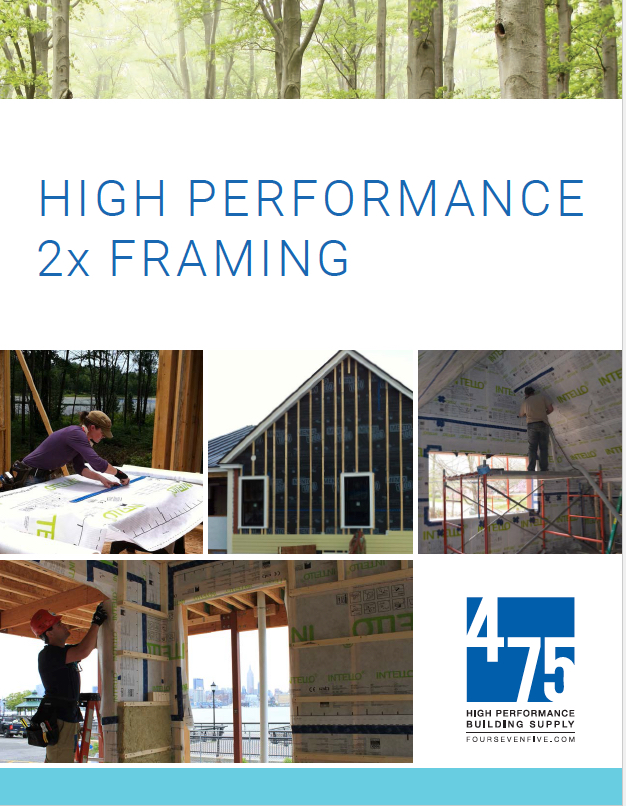
A New York-based supplier of building components used in high-performance construction has released the third in a series of free e-books, this one focused on airtight wood-frame construction.
High Performance 2x Framing from 475 High Performance Building Supply can be downloaded from the company’s website. For those who’d rather have a paper copy, the book can be ordered for $20. It’s intended for builders in Climate Zone 4 and up.
“As states impose stricter energy codes, jurisdictions nationwide have begun recognizing and mandating greater levels of airtightness,” the company said. “Airtight walls can be up to five times more energy efficient compared with similarly insulated, but leaky, walls.”
Techniques described in the book are aimed at increasing performance with little or no increase in construction costs. “Providing greater airtightness provides greater comfort, resilience and cost savings, essentially, for free,” the introduction says.
Like other books in the series, this one recommends foam-free construction. Although plastic foam insulation, such as extruded and expanded polystyrene, are common in energy-efficient building, 475 is not a fan, arguing that, among other things, foam insulation is made from toxic ingredients, is a fire accelerant, and suffers from performance degradation over time. “We can do better,” the book says. “We can do much, much better.”
The book includes a number of drawings and photos, and 475 also offers free CAD downloads of building details.
Continuous insulation is key
The book emphasizes the importance of both airtightness and a continuous layer of insulation on the outside of exterior walls to reduce thermal bridging.
To illustrate, the book compares the heating demand in tight, well-insulated buildings to that for not-so-tight assemblies without continuous insulation. For example, in a house with 2×6 walls and R-21 cavity insulation and an airtightness of 10 air changes per hour at 50 pascals, heating demand is an estimated 39,000 Btu per square foot per year. That compares with 20,000 Btu per square foot per year in a building with R-21 cavity insulation, R-8 of continuous insulation and airtightness of 1 ach50.
Estimates were developed with the Passive House Planning Package, the energy modeling software used in designing Passivhaus buildings.
Instead of foam on the outside of the building, the text recommends mineral wool, fiberglass or a product called Gutex Multitherm. The Gutex website describes the product as a “hydrophotized” tongue-and groove panel made from spruce and fir with polyurethane resin and paraffin additives. It’s available in thicknesses of up to 7 3/4 inches.
475 lists the R-value of Gutex at 3.7 per inch. A 1 9/16-inch thick panel 31.5 inches by 43.3 inches costs $23.94.
The book recommends Pro Clima membranes, tapes, caulks and gaskets, products which 475 also sells, although similar products could presumably be substituted.
Earlier 475 books dealt with I-joist assemblies and historic masonry retrofits.
Weekly Newsletter
Get building science and energy efficiency advice, plus special offers, in your inbox.












2 Comments
Oops
Typo in the last line: "Earlier 475 books death with I-joist assemblies and historic masonry retrofits."
Response to Peter Pesce
Peter,
Thanks. The typo has been corrected. GBA appreciates your help.
Log in or create an account to post a comment.
Sign up Log in